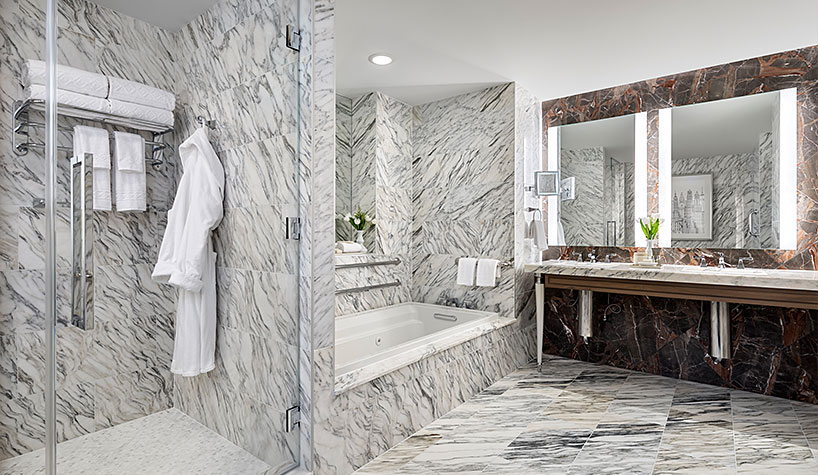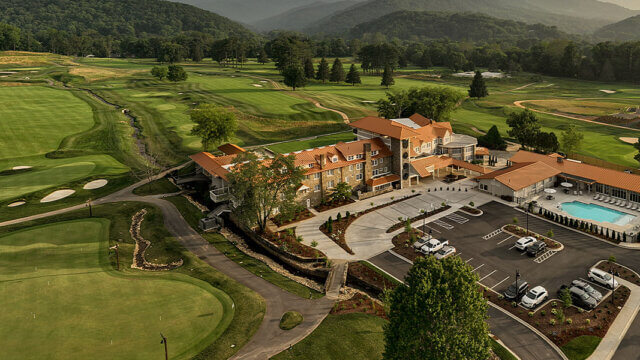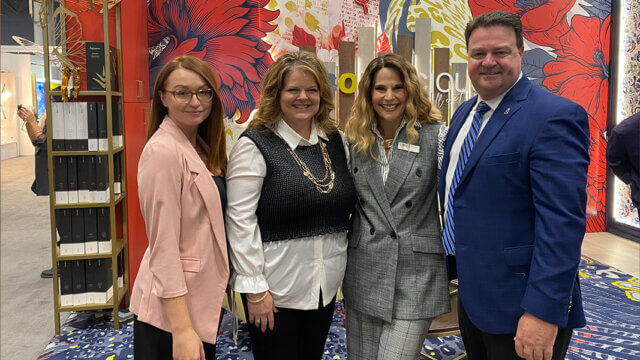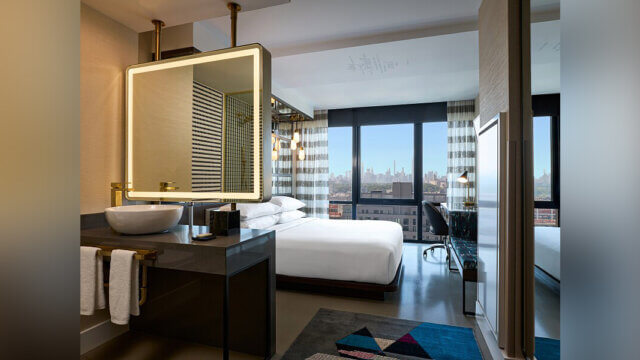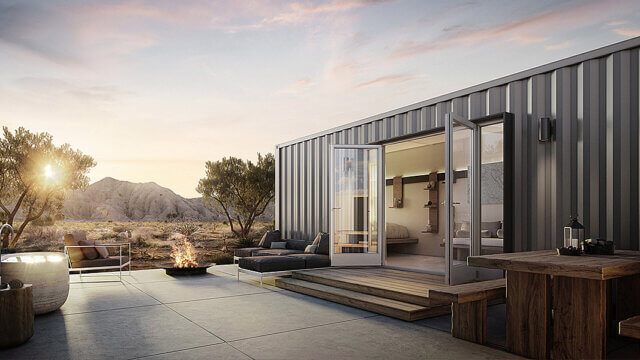NATIONAL REPORT—This year marks the 30th anniversary of the Americans with Disabilities Act (ADA), a revolutionary piece of legislation that has had long-lasting effects, both on the country and the hospitality industry.
“It is probably the largest piece of civil rights legislation in the last 30 years,” said Bryan Soukup, VP of government and public affairs, American Society of Interior Designers (ASID). “At ASID, our motto is ‘Design Impacts Lives.’ I don’t think there is a greater example of how design impacts lives than the Americans with Disabilities Act and the building standards that go into implementing the Americans with Disabilities Act. Whenever I am talking about the subject of accessibility design and universal design generally, I always tell folks from outside the industry and the practitioners as well that design has the opportunity to be such a great equalizer for all people, Americans and people around the world.
Hotel Business spoke with ForrestPerkins president Deborah Lloyd Forrest, an ASID fellow, about how the act has changed hospitality design and what its future effects will be.

How do you believe the Americans with Disabilities Act has changed designing for hospitality projects?
It has challenged our industry to achieve a true hospitality experience for all guests with full accessibility to all facilities that are offered. Actually, the ADA and its updates have provided safer and better access to all ages and levels of mobility and disability.
The physical improvements to hotels not only benefited people with permanent or progressive disabilities but also those with temporary accessibility issues, such as someone in a cast or using a wheelchair or walker temporarily due to a fall or other accident.
Devices such as strobes and other warning devices for hearing impaired guests, as well as electrical devices, drawer and door pulls, drapery and shade cords that could endanger young children are important aspects of the evolution of the ADA over the years. Many commonly specified elements of hospitality projects have been improved through innovation to adhere to the standards while elevating the look, feel and function of the product, thus the spaces we design.
A great example is the ubiquitous grab bar. There are now many options with beautiful materials such as teak rails incorporated into this highly functional and required item.
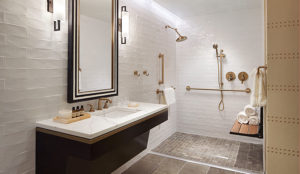
Do you have any examples in your career of how the requirements of the ADA have caused you to think differently about the design of a project? Have you come up with any unique solutions because of it? Implementing requirements of the ADA have become second nature at this point. We are always working with manufacturers to develop more pleasing and functional items that allow all guests’ needs to be graciously and seamlessly provided for in all areas of the hotels we design.
How do you think the ADA will affect design as disabilities beyond the physical (cognitive, behavioral) are taken into consideration in future regulations? What the ongoing challenges to health and wellbeing made clear by the current pandemic, is the ADA, building codes and health regulations must quickly evolve to address safe, clean environments, indoor air quality with constantly filtered air, access to outdoor air such as operable windows, stricter regulations regarding self-serve food service, such as buffets and the like.
ForrestPerkins recently envisioned the public restroom of the future based on the challenges of the pandemic for the NEWH Beyond COVID competition.
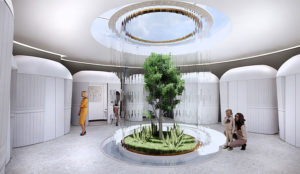 With social distancing and regular disinfecting now normalized, we were inspired to create a unique restroom experience with biophilic elements such as indoor gardens and water features, with generous space centered on completely self-contained, custom bathroom pods. Upon entry and exit, guests transition through seamless portals emitting UV cleansing light. Technology is used in wayfinding to help the user understand the layout, operation and occupancy of the space. The view into the restroom is opened up, the hygiene stations have become a feature to be experienced as you travel around a large, oval interior garden below a grand skylight bringing in the warmth and wellness provided only by the sun. As one travels into the pod chambers, they’re welcomed by a calming interior rain curtain and circular pool, which also helps to filter the air and provides a calming soundtrack to the senses.
With social distancing and regular disinfecting now normalized, we were inspired to create a unique restroom experience with biophilic elements such as indoor gardens and water features, with generous space centered on completely self-contained, custom bathroom pods. Upon entry and exit, guests transition through seamless portals emitting UV cleansing light. Technology is used in wayfinding to help the user understand the layout, operation and occupancy of the space. The view into the restroom is opened up, the hygiene stations have become a feature to be experienced as you travel around a large, oval interior garden below a grand skylight bringing in the warmth and wellness provided only by the sun. As one travels into the pod chambers, they’re welcomed by a calming interior rain curtain and circular pool, which also helps to filter the air and provides a calming soundtrack to the senses.
The pods incorporate touchless sensor and self-cleaning technologies and utilize anti-microbial finishes throughout. By design, these pods can stand alone, be positioned within a public space or even perhaps as a sculptural element in a beachside resort garden. The pod facade can be one of great sculptural value to any space.
The design of the pod interiors can be easily scaled to fit any market. We imagine the luxury pod to be one of immersive and choreographed experience, with welcoming messages, soft transition lighting controlled by sensors, individual temperature control, personalized music, and even voice-activated ability to request a weather update or even assistance should one feel ill. All surfaces are seamless for ease of cleaning and instantly convey safety and cleanliness.
The “plug-and-play” attribute of the pod design makes it flexible for a variety of applications—whether interior or exterior, traditional or “out of the box.” Not only would this reduce construction schedules and lead times, but it would provide an increased sense of calm and comfort for those using the facility while promoting health in a non-intrusive way. Regardless of the market application, the pod provides for a private, safe and curated experience—by definition, it is the new luxury we didn’t know we needed.
